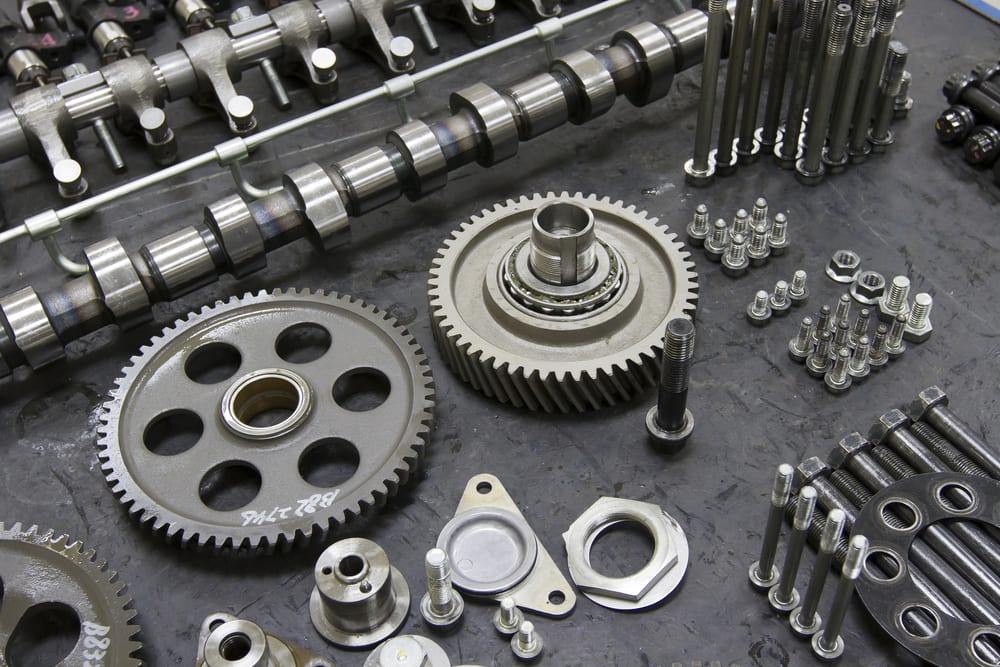

Every driver should have some familiarity with auto parts. While not everyone will have the skills of an auto mechanic, it's helpful to know basic car parts and to understand their function. Having this understanding will help drivers if car trouble occurs. Some people prefer to perform their own automotive maintenance and repairs. While basic maintenance is often within the reach of consumers, other repairs will require the skills of a professional. When consumers seek auto repairs from mechanics, understanding basic automotive parts and their functions will help consumers avoid unnecessary repairs. Professional mechanics must train for automotive technician jobs to enter this industry. Technical colleges offer certification and degree programs to train and prepare mechanics for positions in automotive repair centers. The demand for skilled mechanics will surely continue due to the prevalence of automobiles.
ABS: An anti-lock braking system is controlled by a computer, preventing the brakes from locking up and tires from skidding in an emergency braking situation.
Accelerator: The accelerator is the gas pedal. The driver presses the accelerator to move the vehicle either forward or backward.
Air Filter (PDF): The air filter includes a paper or fabric filter, which sits inside a drum. The purpose of the air filter is to capture debris to keep dust and dirt out of the engine.
Alternator: A vehicle's alternator produces alternating current electricity. This electricity keeps the windshield wipers, air conditioning, cooling fan, headlights, radio, and defogger running.
Catalytic Converter: The catalytic converter is part of the car's emission control system. As a part of the exhaust system, the catalytic converter changes exhaust emissions into gases that won't cause as much harm to the environment. If a catalytic converter is not functioning correctly, a vehicle will not pass an emissions test.
Condenser: The condenser has fins and looks similar to a radiator. This part circulates air conditioner refrigerant, cooling it as it passes through the fins.
Disc Brakes: This braking system uses a disc that rotates in conjunction with the wheels. Calipers on each side push into the disc to stop the car.
Distributor: The distributor moves electricity in a specific firing order to move the cylinders in the engine.
Four Wheel Drive: When a vehicle has four wheel drive, the engine powers all four wheels at the same time. This results in greater traction for the vehicle. Some vehicles utilize continuous four wheel driving, while others give the driver the option to use it.
Fuel Injector: The fuel injector is a valve controlled by electricity that moves fuel into the combustion chambers of the engine.
Fuel Pump: The fuel pump is a part of the fuel supply system. The fuel pump's job is to force gas from the gas tank into the engine. If the fuel pump sends too much or too little gas, performance issues will result.
Transmission: The transmission controls the movement of gears in a vehicle. The terrain and driving conditions can determine the movement of the gears.
Keyless Entry System (PDF): This system enables drivers to access vehicles without a key. A key fob contains buttons that lock and unlock the vehicle. Inserting the key fob into the ignition will start the automobile. Some key fobs also start a vehicle remotely with the press of a button.
Parking Brake: The driver uses the parking brake to keep a parked vehicle from moving. This system attaches either to the drive shaft or the rear wheels.
Powertrain (PDF): Also known as the drivetrain, the powertrain is the collection of parts that moves the wheels.
Radiator: The radiator is a part of the cooling system. A radiator works as a heat exchanger. As air moves through the radiator, it reduces the temperature of the coolant to protect the engine.
Shocks: Shocks are a part of the car's suspension system, providing stabilization and distributing the weight of heavy loads to make a car handle more effectively.
Tachometer: The tachometer shows the speed of the engine. A driver watches the tachometer to know when to change gears in a manual transmission vehicle.
Thermostat: The thermostat sits between the radiator and engine. The purpose of the thermostat is to keep the coolant above a specific temperature. If the thermostat detects coolant below this temperature, it will prevent the coolant from entering the radiator until it reaches the minimum temperature.
Water Pump: The water pump is a part of the cooling system. This part moves coolant through the cooling system to prevent a vehicle from overheating.



